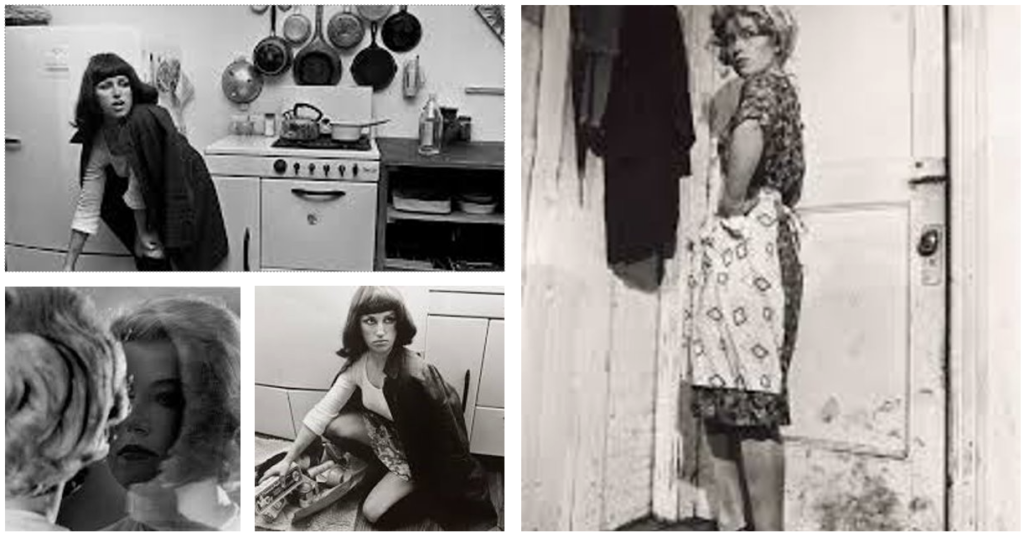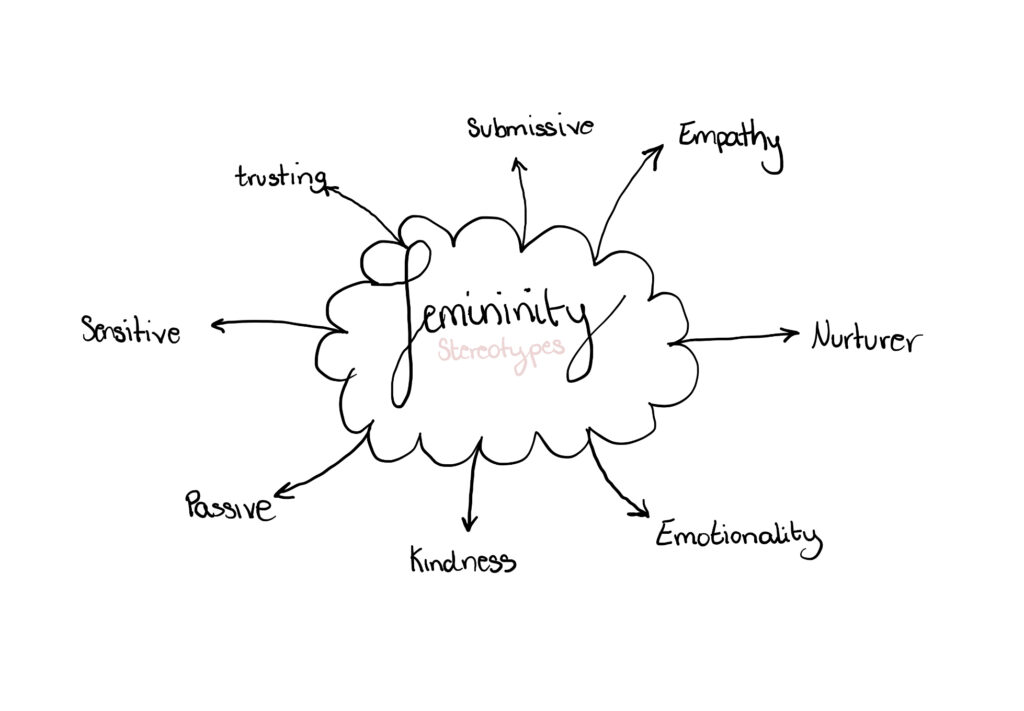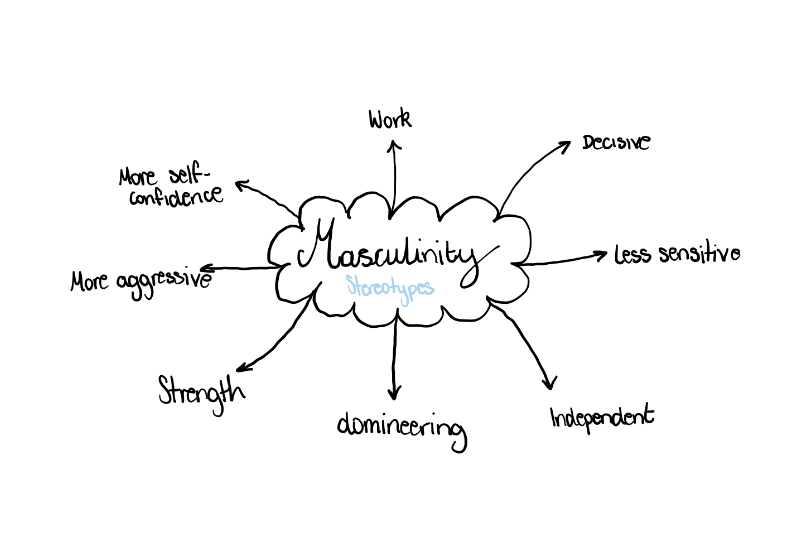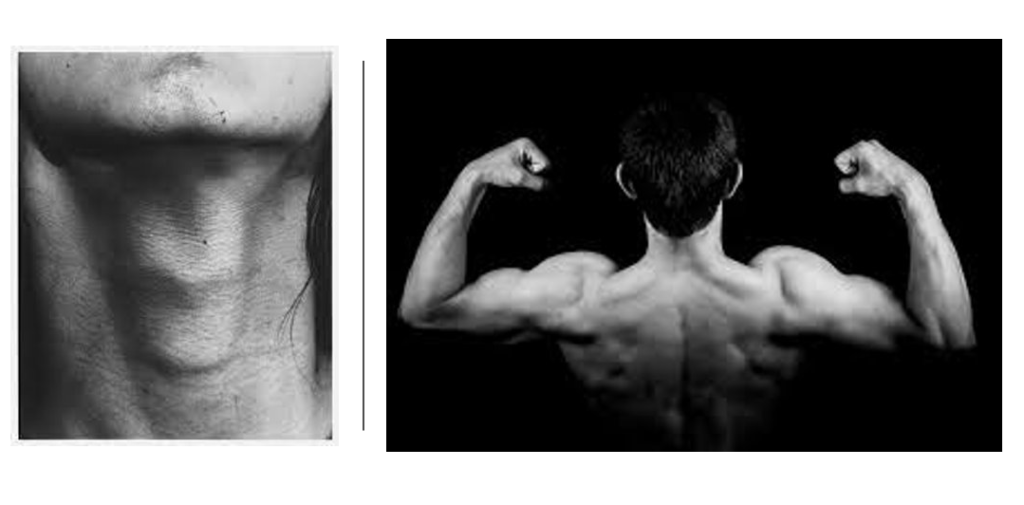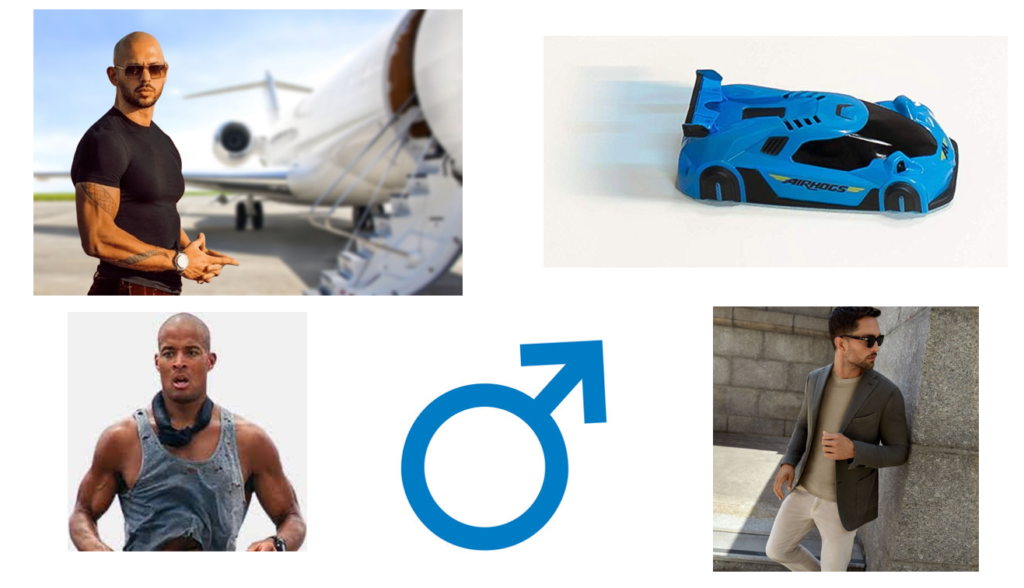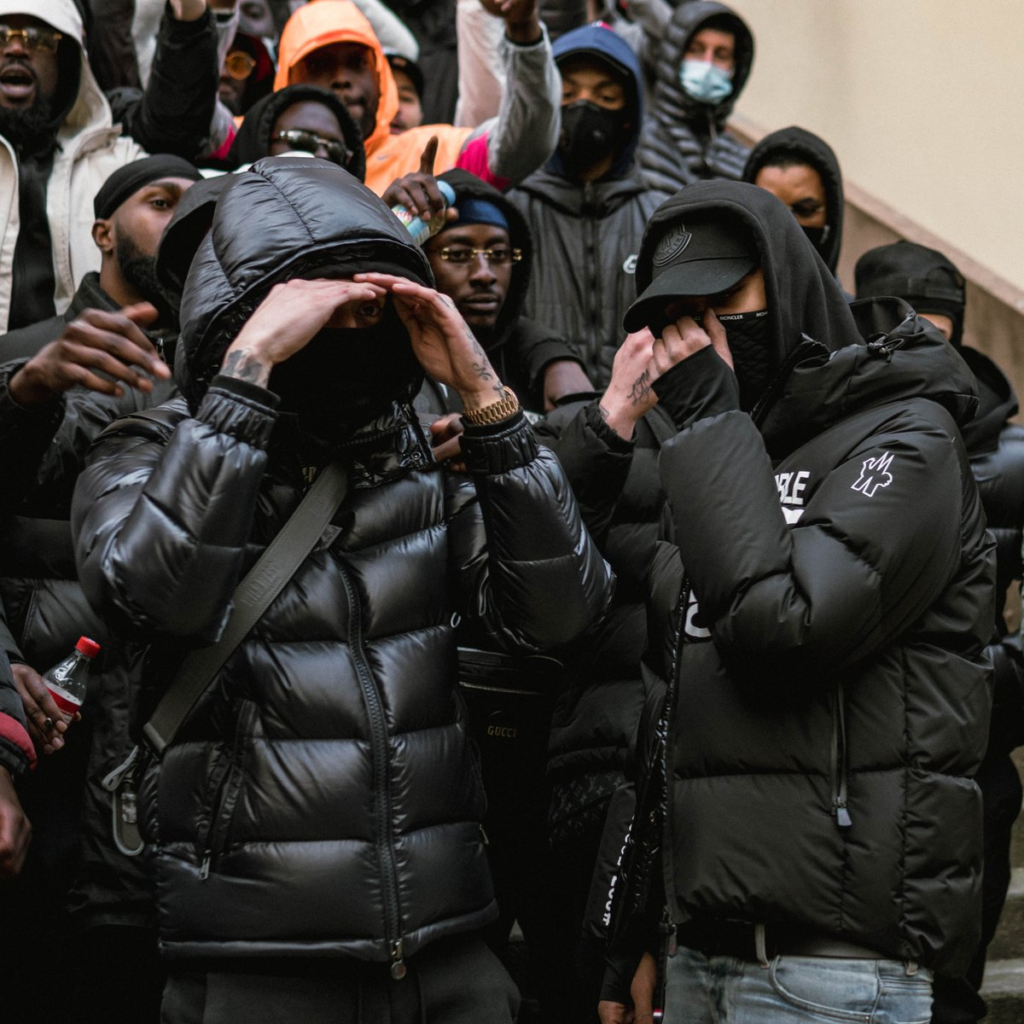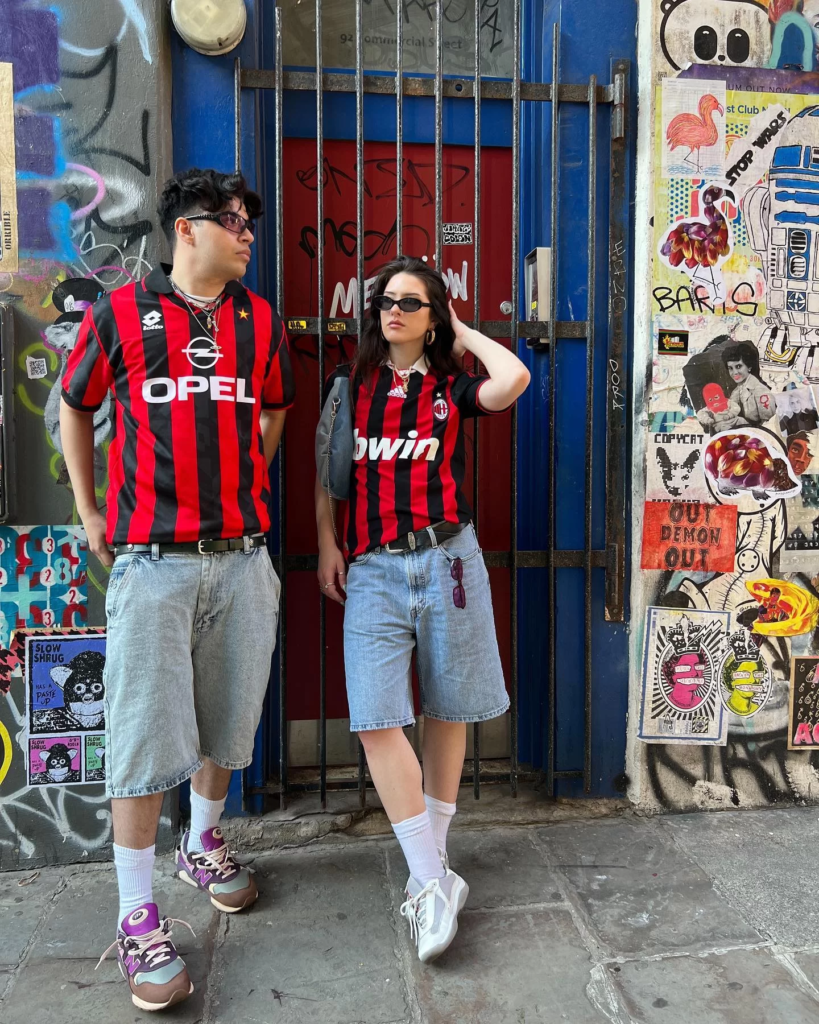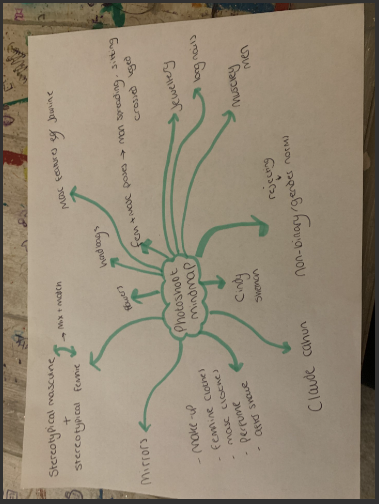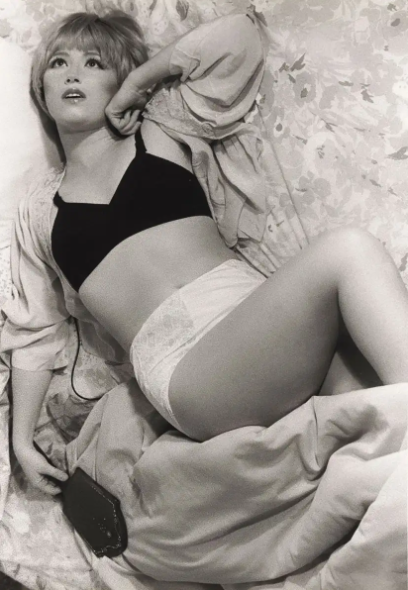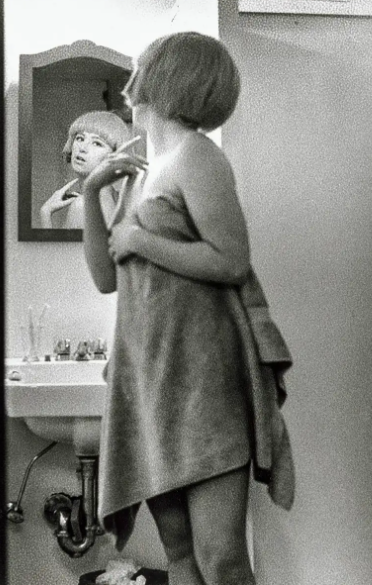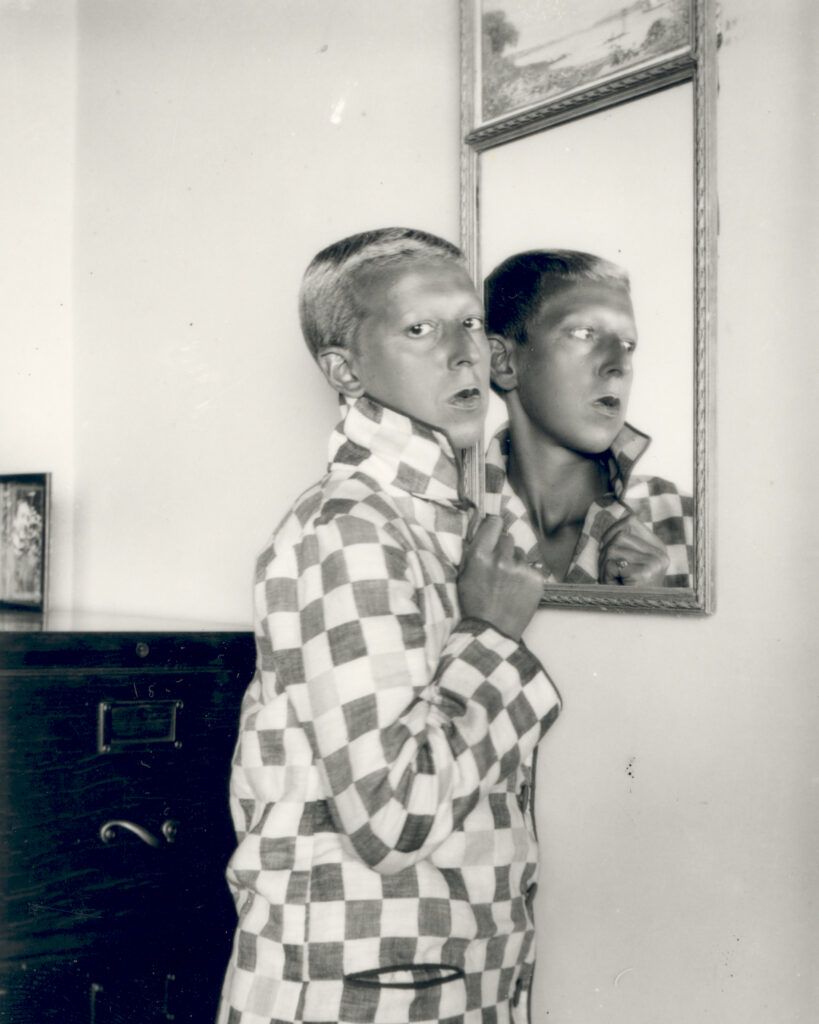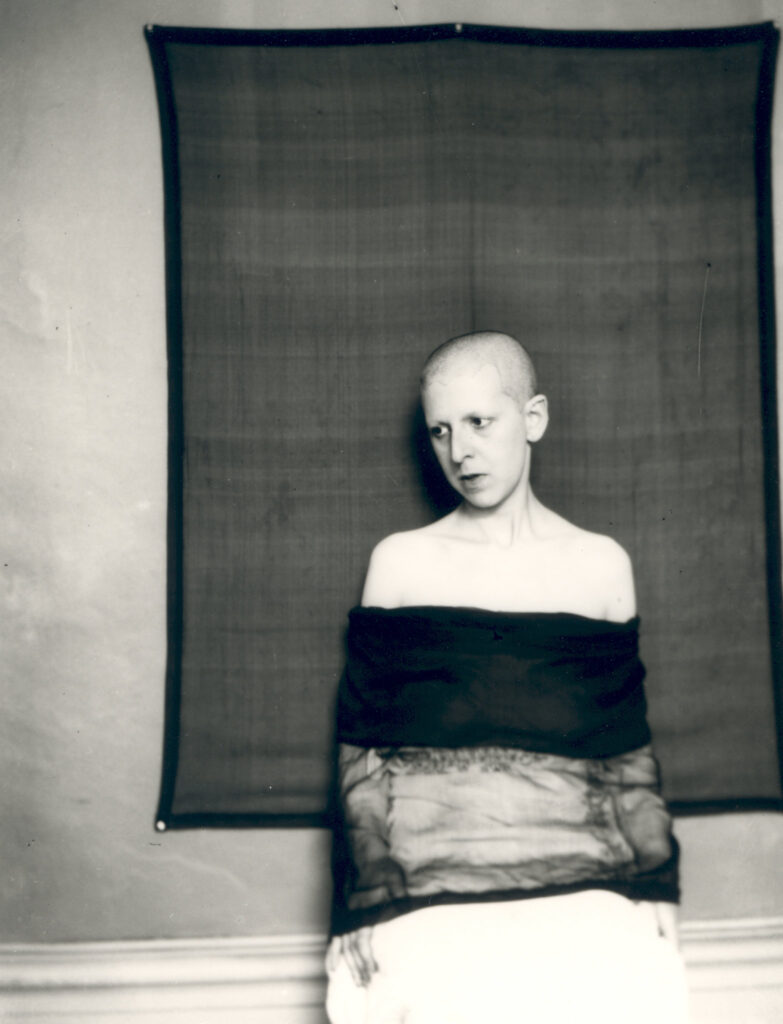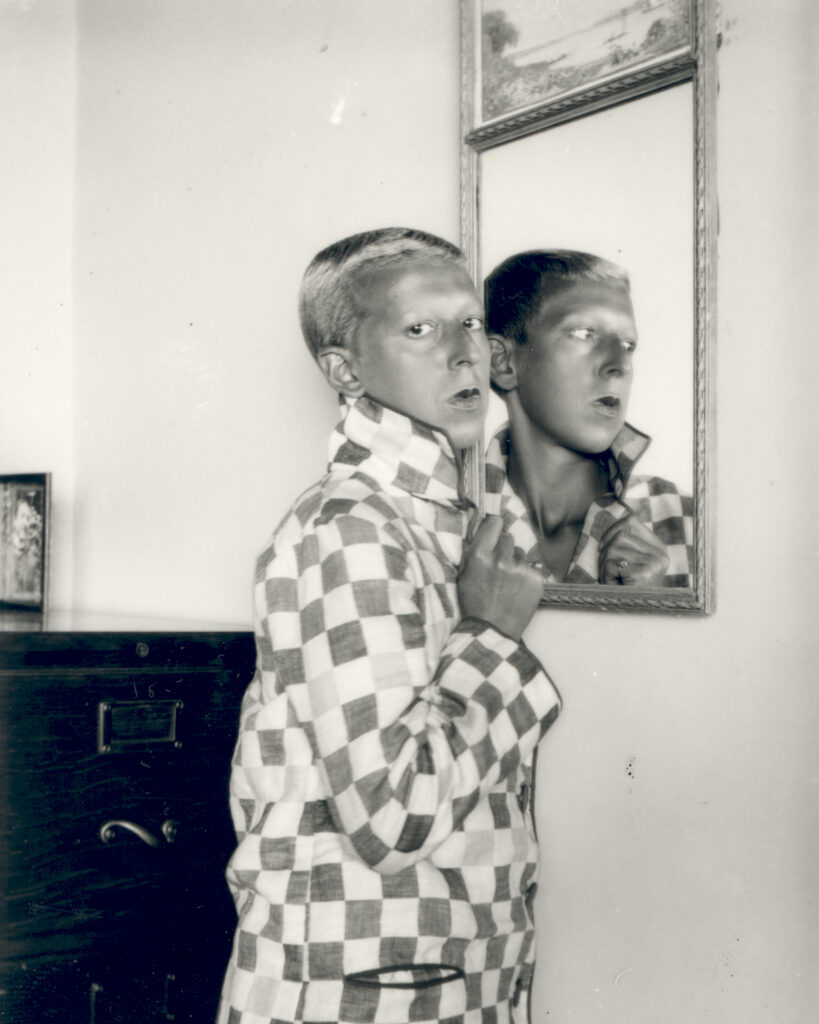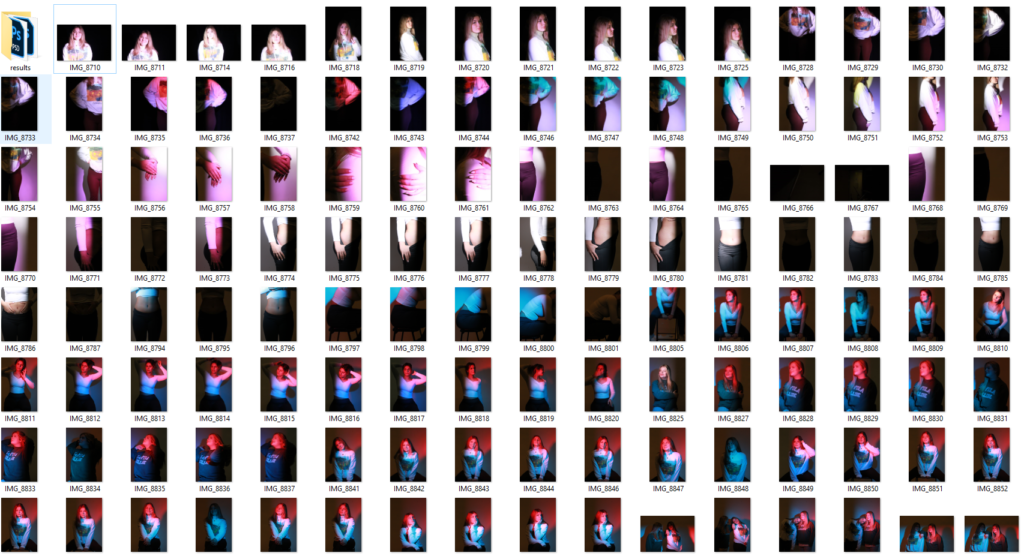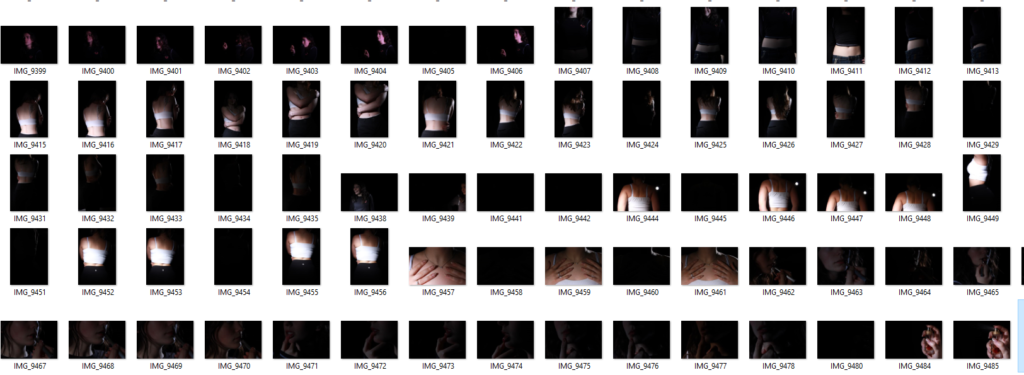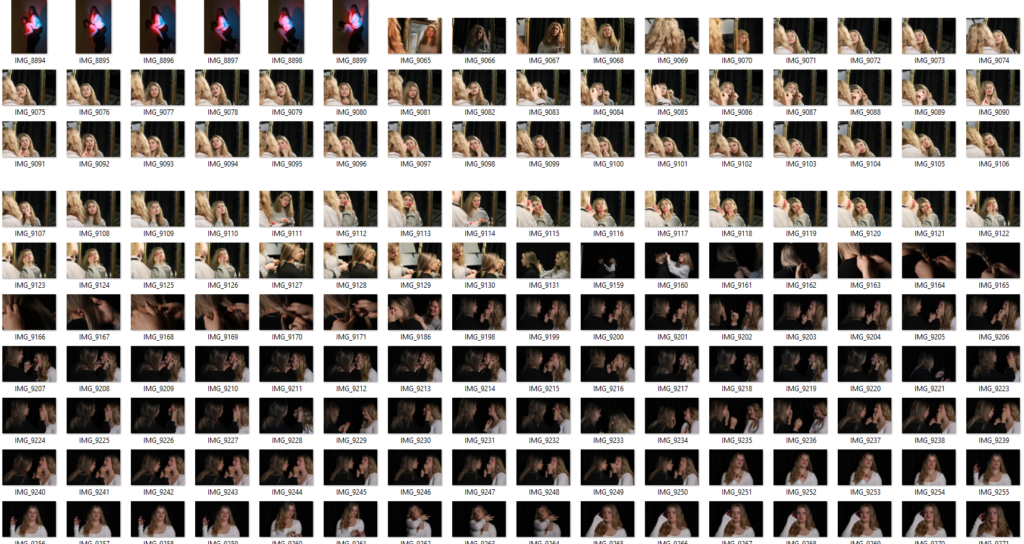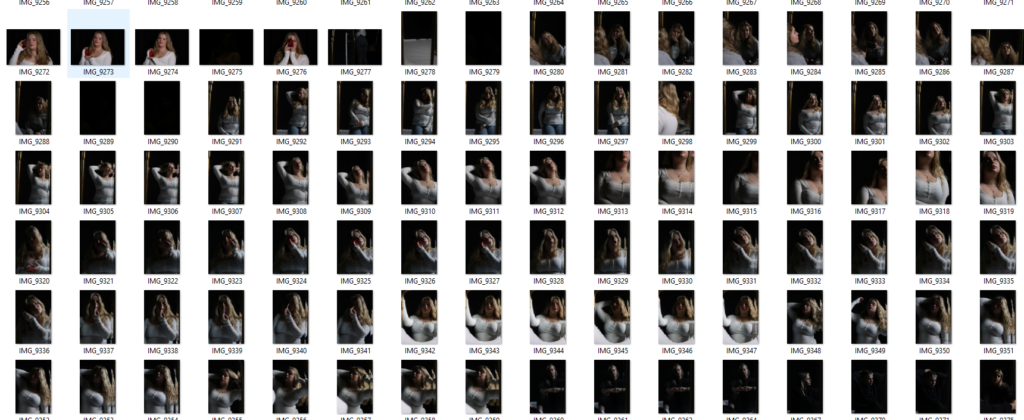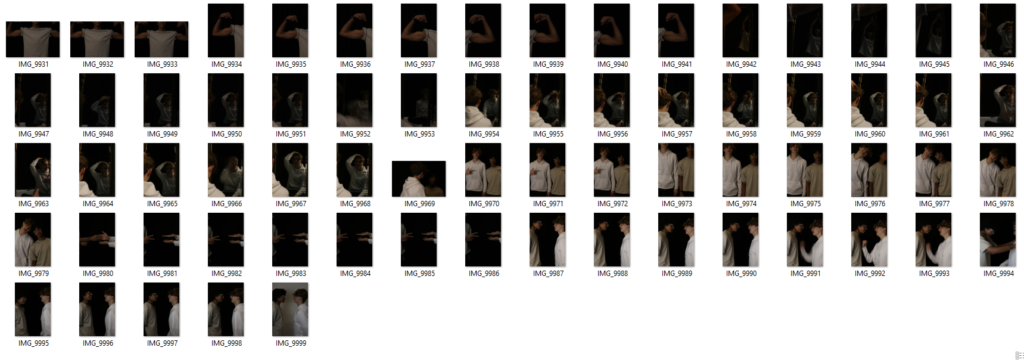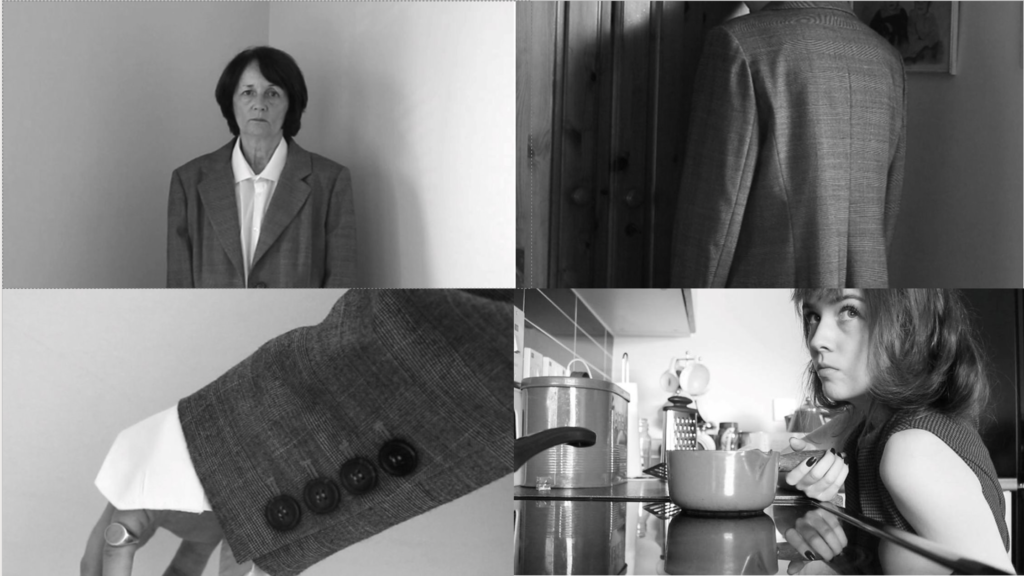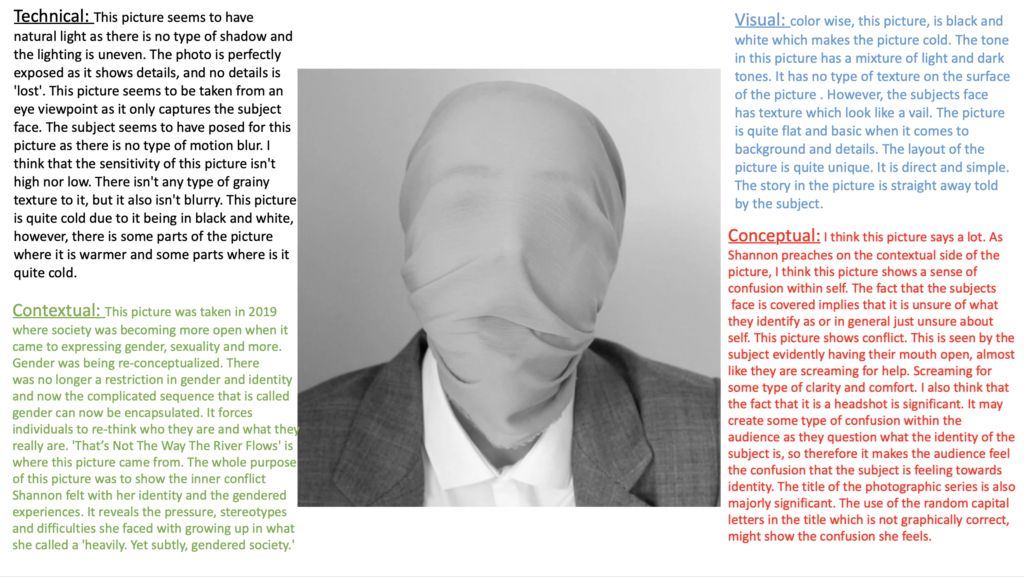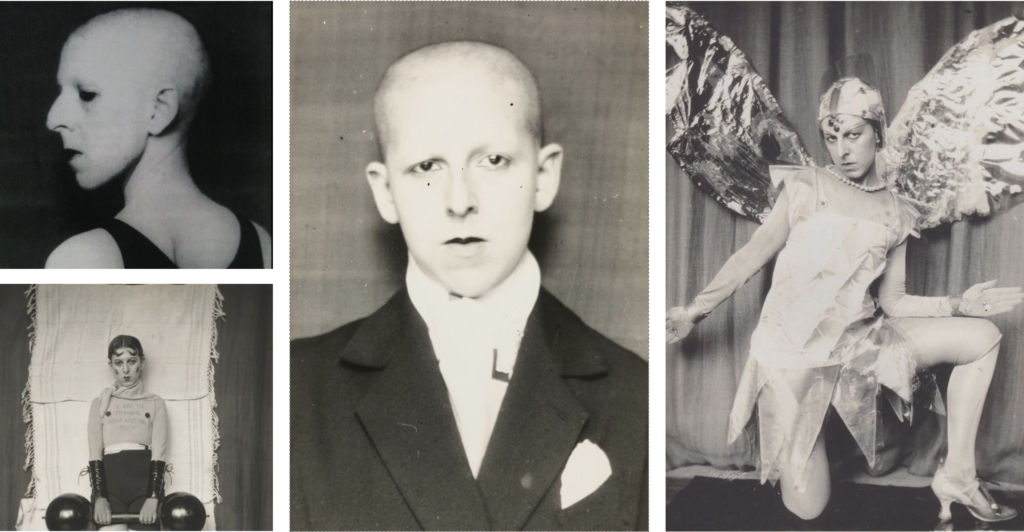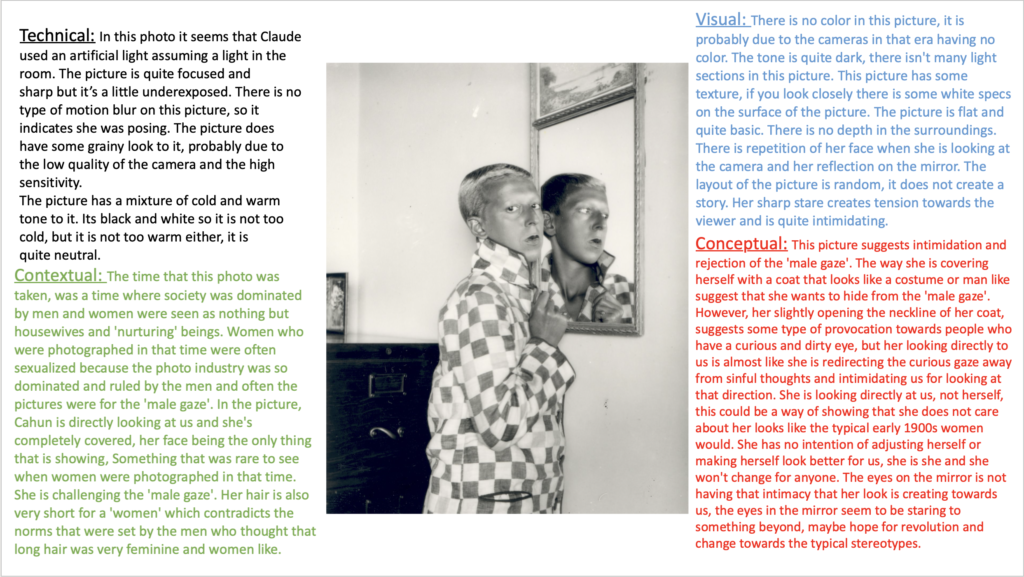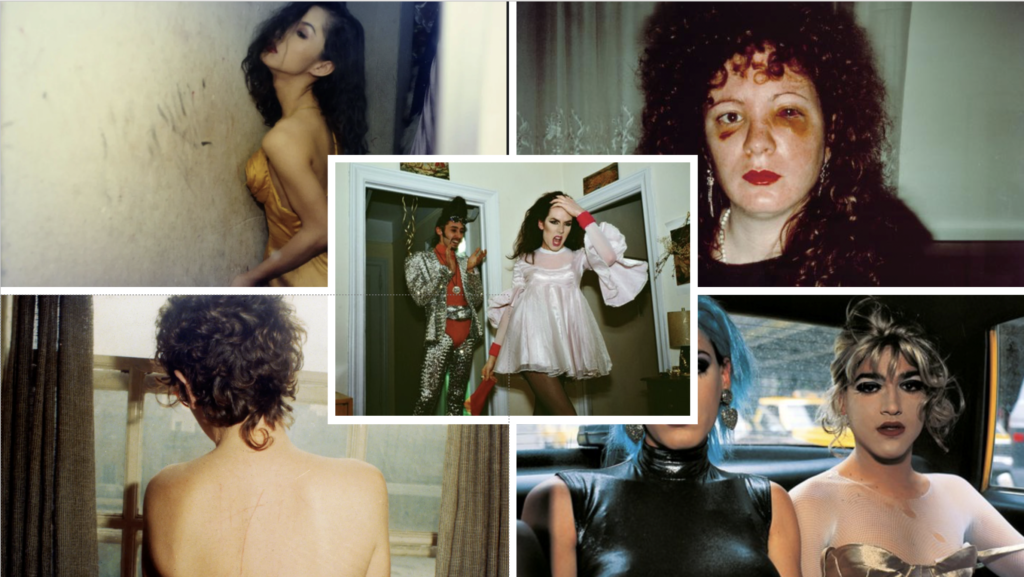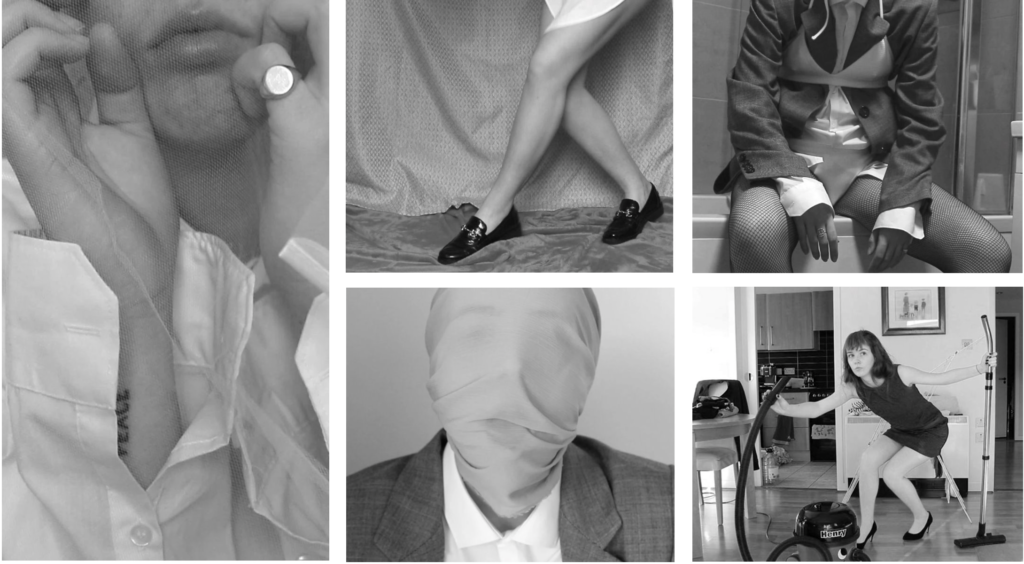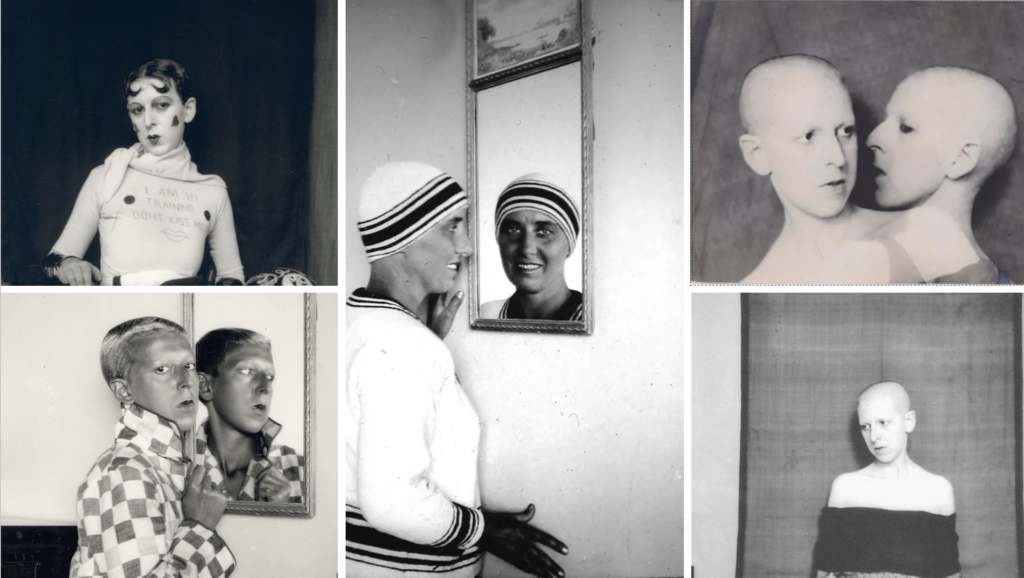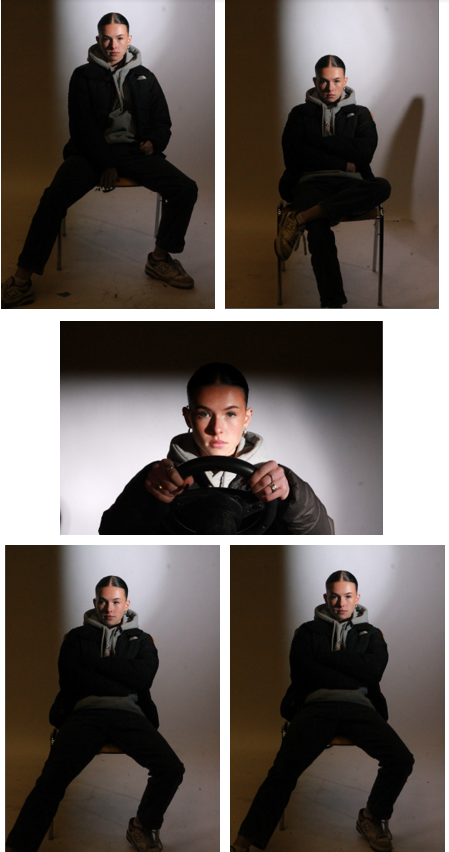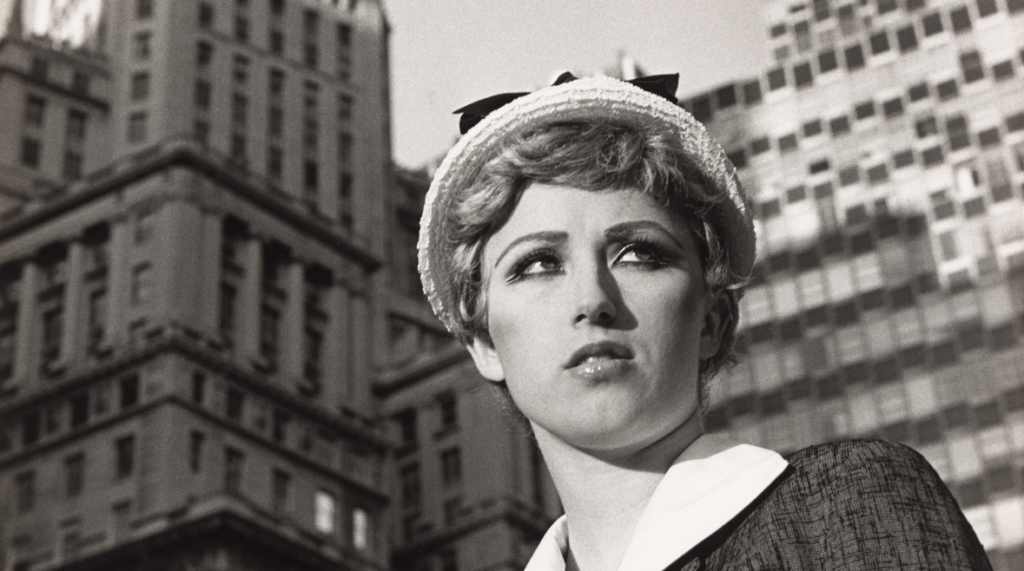
Born in Glen Ridge, New Jersey, in 1954, Sherman graduated from the state university of New York buffalo and very quickly rose to fame with her work in art.
Cindy Sherman’s photography is very clearly focussed on the topic of female stereotypes. She regularly alters her appearance beyond recognition through makeup, prosthetics, and costumes. To create her images, she assumes the multiple roles of photographer, model, makeup artist, hairdresser, and stylist. She becomes the character in the story she is attempting to portray through her images.

Many people have perceived Sherman’s photography to be uncomfortable creepy, or even terrifying since we see the depicted woman in a vulnerable position. a few of her photos show herself with her back to the camera which can also be an example of vulnerability as it could be seen as someone watching her and she doesn’t know.
What impact did she cause to photography or society?
Cindy Sherman’s photography is important because of the way it depicted how women are viewed in society. The exploration of identity, gender, and representation have inspired countless artists and photographers to up level and push boundaries when nit came to their own artwork.
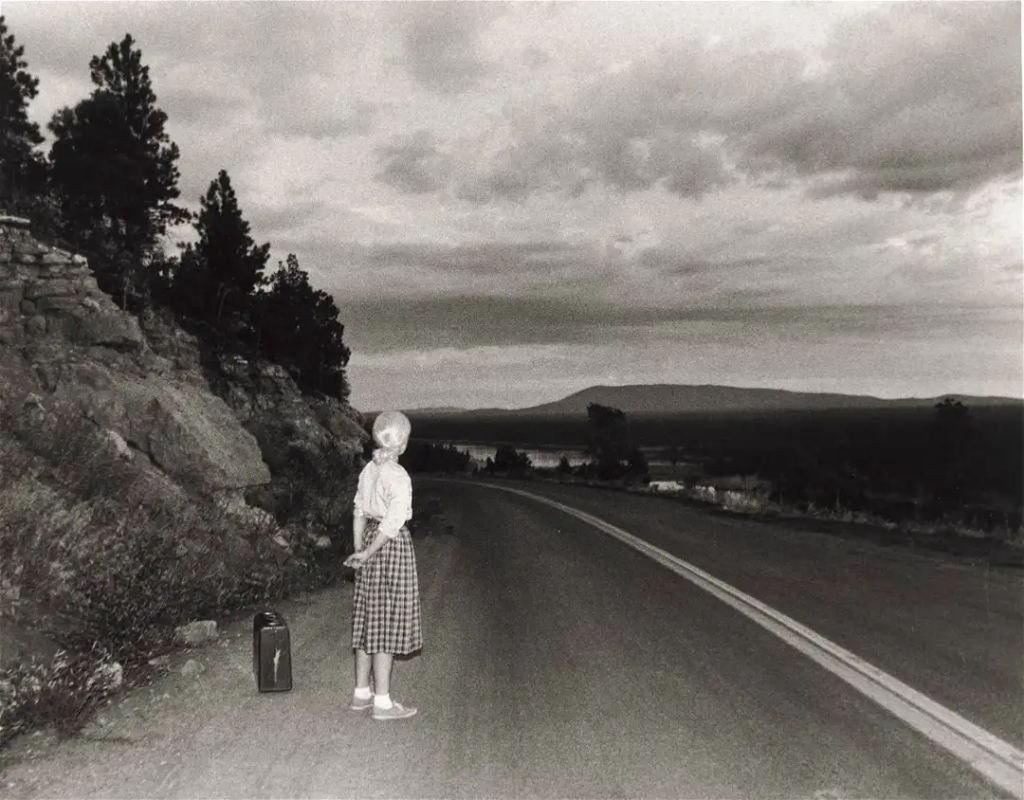
In this particular photo, we can see a woman stood alone on the roadside with her luggage beside her. It was usual for Sherman to create black and white photos since that was the option for her to start her photography with. in this photo, the black and white gives an extra ominous feeling to the image. Sherman often created photos that focussed on vulnerability and in this photo it can be seen. the use of her showing her back to the camera could make the viewer feel uncomfortable as if she doesn’t know someone is watching her.
The lighting/exposure of the camera and the use of her brighter clothes has made her stand out to the rest of the image and contrast with the darkness of the sky. I think this is very effective as it makes her the obvious main focus of the image. This idea can also be taken from the use of space in the image. She is not in a crowed small area, she is in an open space alone which would create more tension for the viewer.

In this photo, I could be interpreted by the viewer that Sherman is impersonating a house wife. This can be clear by the objects she adds to the image to subtly create this thought. the use of the pan and soap bottle suggest to the viewer that she could be pictured in a kitchen. as well as this, she is also wearing an apron.
As well as the last image, the black and white can also cause an ominous feeling or sense of tension and the tone of the image makes it feels like a dark and scary moment for the woman. she can be seen to be looking over her shoulder and the viewer can interpret that to what they like but it was usually be a negative thing she may be looking at. Sherman is also seen holding her stomach which could be a usual comfort for a woman so this could further suggest something to make her uncomfortable is going on and further shows how she depicts the theme of vulnerability in her photos.
